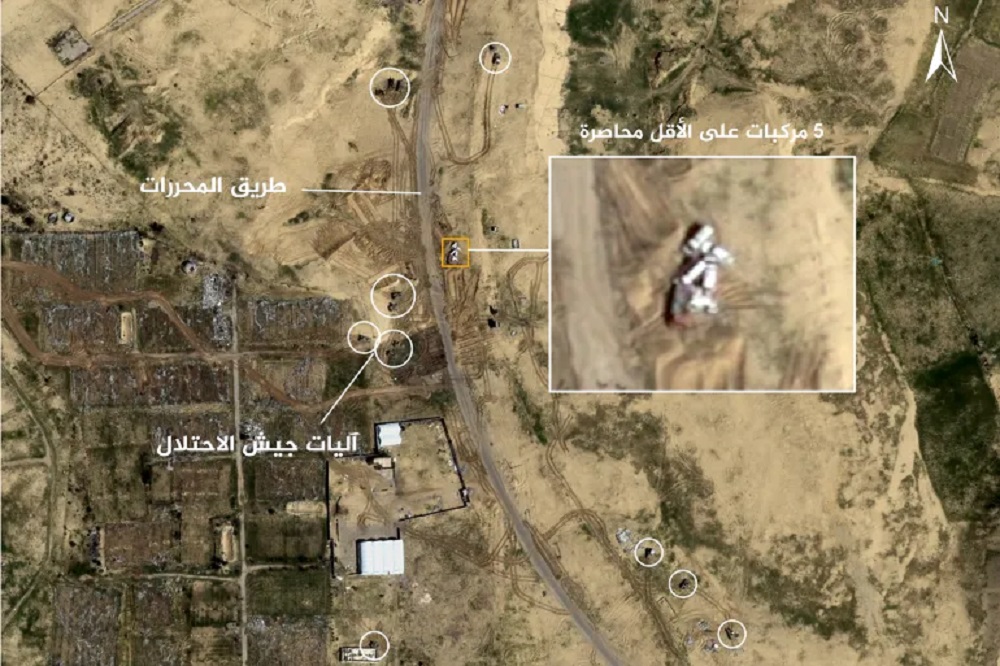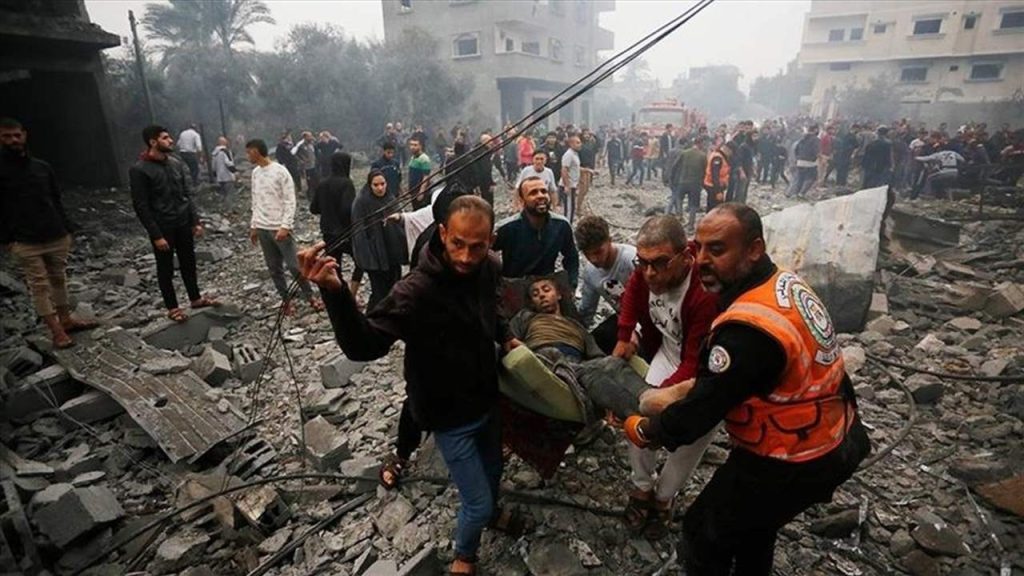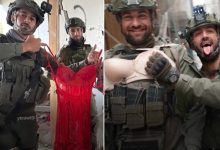“Why Were They Killed?” Gaza Paramedic Families Demand Justice for Fallen Rescuers
Families mourn 15 paramedics killed and buried by Israeli forces near Rafah, demanding justice as harrowing accounts reveal signs of torture, execution, and a cover-up of humanitarian workers' deaths.

Watan-Families of paramedics killed and buried in Rafah sands by Israeli forces are demanding answers, angry and heartbroken over what crime their loved ones committed to be killed in such a brutal, concealed way.
Gaza is now considered one of the most dangerous places in the world for civilians, as Israeli forces continue their military campaign with intensified ferocity. For first responders rushing into the rubble of bombed buildings, the danger multiplies.
Fifteen paramedics and rescue workers were found buried in a pit outside Rafah over the weekend, their bodies dumped by a bulldozer. They knew they were risking their lives to save others, but they were not prepared for what awaited them in the early hours of March 23.
Saleh Muammar, a 45-year-old senior officer with the Palestinian Red Crescent, had already faced death twice, his brother Bilal recalled.

Earlier in the war, Saleh was transporting patients when his ambulance came under Israeli fire. The driver was killed instantly, and a bullet lodged near Saleh’s heart. He gave himself first aid, slid under the seat, and drove the vehicle away from the shooting while receiving instructions over the radio.
After three months in the hospital, Saleh returned to work. Soon after, he was shot again—this time in the shoulder—during another rescue mission near Rafah.
The ambulances were marked with the red crescent symbol. They thought it would protect them. They were tragically wrong.
Saleh and Bilal often joked, half seriously, that the third time would be fatal. Saleh used to say, “What is destined will happen.”
The night of March 22, before his shift, Saleh bought a large amount of household supplies for his wife, six children, and two nephews he had been caring for since their father was killed in the war. “He said it would benefit them in the future,” Bilal recalled, “as if he knew he wasn’t coming back.”
“They Went to Save Lives and Became Victims”
Saleh, originally a business student at Al-Azhar University, joined the Red Crescent during the 2008–2009 Israeli invasion out of a desire to do something real and immediate to help. He loved his work and spent most of his time in the emergency department, according to his brother.
After ambulance shifts, he would help in vehicle maintenance, deliver medicines, and visit injured patients at home. He searched for those in need.
On March 23, an early morning call reported injuries in an airstrike on Tel Al-Sultan, Rafah. Saleh responded in an ambulance, assessed the destruction, called for backup, evacuated the wounded, and returned to base.
Then, he learned that another ambulance led by his colleague Mustafa Khafaja had lost radio contact. That vehicle had been attacked by Israeli gunfire. Khafaja and fellow medic Ezzedine Shaath were killed, while the third paramedic, Mundher Abed, survived but was arrested by Israeli soldiers—whom he later described as special forces.
Before sunrise, Saleh returned to the site and saw the abandoned ambulance in sand dunes known locally as al-Hashasheen. He returned to base and organized a rescue convoy: multiple Red Crescent ambulances, a fire truck, and a UN vehicle. Thirteen medics and rescuers in total went back to search for the missing. It was the last time they were seen alive.
Mundher Abed, still detained and tied on the ground, later recounted seeing each rescue vehicle ambushed in succession. Then a bulldozer dug a pit, dumping the vehicles and covering them with sand.

For a week, the families of the missing waited for news. When the tragic confirmation came, Bilal and relatives rushed to Nasser Hospital in Khan Younis, hoping Saleh wasn’t among the dead—but his body was there. “I was the one who uncovered his face,” Bilal said. “There were handcuff marks on his wrists. His fingers were broken.” They recognized him by his ring.
Two eyewitnesses confirmed that some of the victims had been tied at the wrists or ankles. The Israeli army claimed it fired at vehicles “approaching suspiciously without lights or emergency signals” and accused Hamas fighters of using ambulances—claims for which no evidence has been provided.
For Bilal, those accusations are another insult. “These were humanitarian workers,” he said. “They posed no threat, carried no weapons. Why were they killed?”
Among other grieving families was Sobhi Bahloul, a 63-year-old father looking for his son Mohammed, a volunteer paramedic. When he found his son’s body, Sobhi was too shocked to cry. “They were still in their medical uniforms, covered in blood and dust.” He recognized Mohammed only after leaning close to his face and checking his ID card.
Mohammed had gunshot wounds in his chest and wrist, indicating he may have raised his arm in defense. “Four bullets, all to the chest and heart,” Sobhi said. “I believe he died instantly.”
Mohammed was passionate about saving lives. He studied nursing at Al-Azhar, earned his ambulance license, trained as a medic, and was pursuing a health administration degree. Since 2018, he had volunteered non-stop, despite the absence of a salary.
“I raised my children to do good without expecting thanks,” Sobhi said. “We never imagined this. They went to save lives and became victims themselves.”

A senior official in an international aid organization wrote about the tragedy, describing how medical rescuers were killed and dumped in a mass grave. He questioned which part was most horrific—the week of uncertainty, the moment of confirmation, or the chilling details of how they were found.
The ambulances were smashed and partially buried in the sand. Nearby lay the bodies of the medics, still wearing their red crescent vests—symbols meant to protect them in life, but in death, they became their shrouds.
Among the fallen were Mustafa Khafaja, Saleh Muammar, Ezzedine Shaath, volunteers Mohammed Bahloul, Mohammed Hilah, Ashraf Abu Labda, Raed Al-Sharif, and Rifaat Radwan. Paramedic officer Asaad Nassar remains missing. These men had rushed into danger to save others.
The area may be dangerous post-ceasefire, but these men weren’t reckless. They believed the red crescent on their vehicles meant protection. They believed international humanitarian law had meaning. They were tragically, terribly wrong.
“I heard them take their final breaths,” said the lone survivor.
The aid official concluded: “This tragedy is part of a growing pattern. More humanitarian workers are being killed around the world. This must stop.”
He called on governments to act, not just send condolences. “I’m angry, but more than that—I’m tired of being angry. Humanitarians must be protected. For the sake of humanity, they must be protected.”






